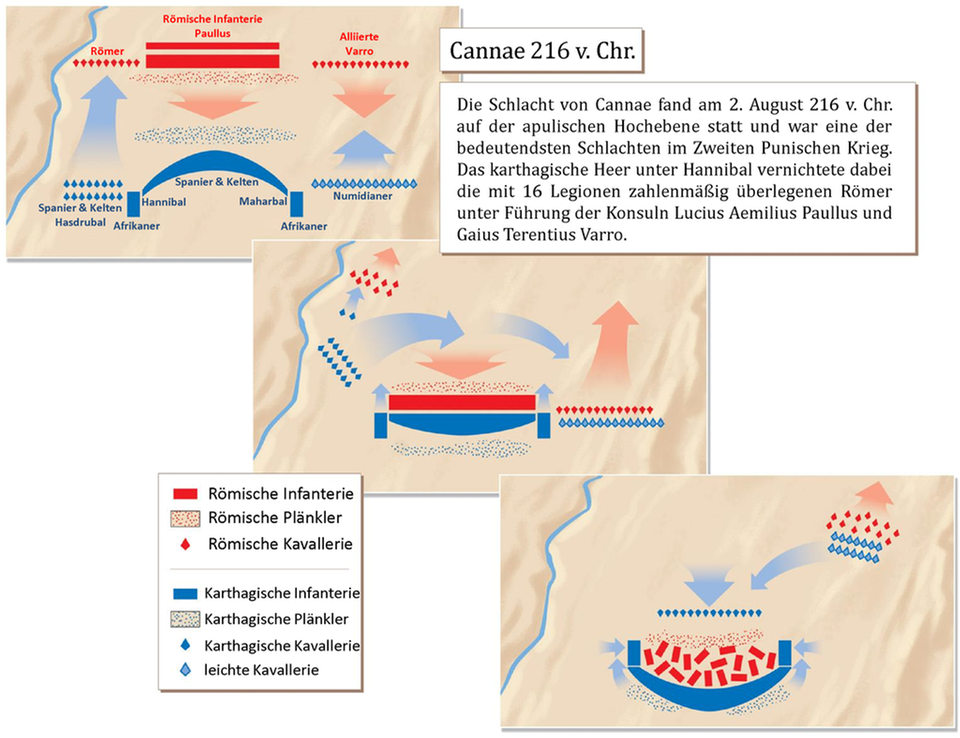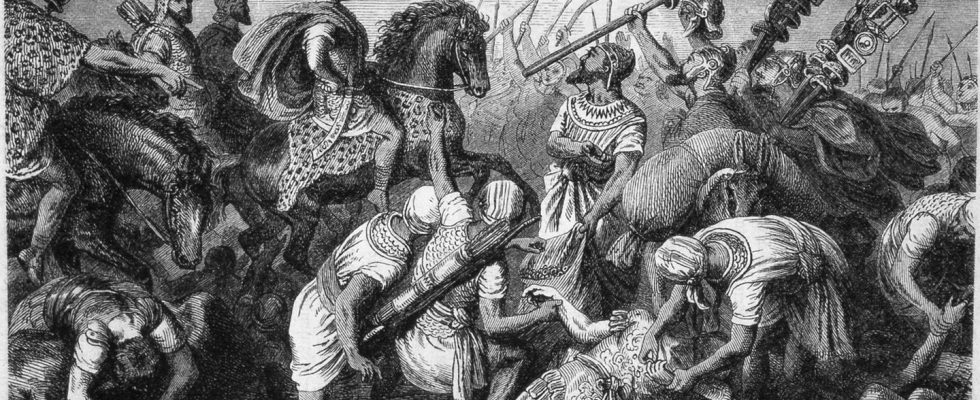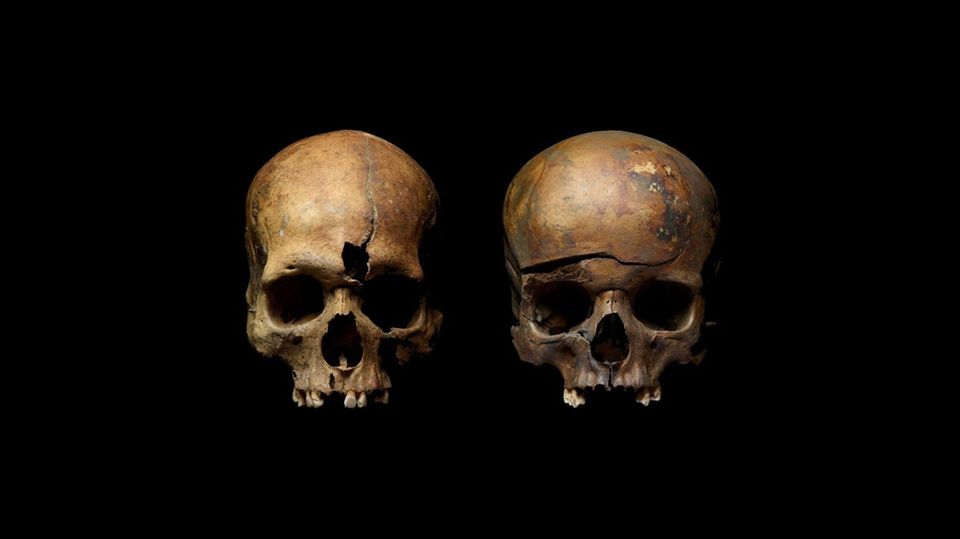Military history
Cannae – how this battle poisoned minds for 2,000 years
“Hannibal on the battlefield of Cannae after the victory and destruction of the Roman army” by Heinrich Leutemann (1824-1905) ; Engraving in the book “Rome” by Wilhelm Wagner (1877)
© Commons
At Cannae the Roman legions were not only defeated. Hannibal’s triumph created the myth of the battle of annihilation.
On August 2, 216 BC, a Roman army met Hannibal’s troops near Cannae in Italy. The battle cemented Hannibal’s reputation as the greatest strategist of his era and marked a crushing defeat for Rome. The numerically superior Romans were not only defeated, the army was literally wiped out.
There are many great victories in the history of war, but Cannae had a special impact. This battle infected and poisoned the minds of Military until the 20th century. Because here the enemy was not only defeated and weakened, but by evening the Roman army no longer existed. Cannae awakened the dark dream of the battle of annihilation. A battle that could decide a war in one fell swoop.
Victory without special conditions
Serious and devastating defeats are usually made possible by special factors that no one can hope to reproduce at will. Varus’ legions also suffered such a defeat in the Teutoburg Forest. But that was because the attack took Varus by surprise and the ambush was planned to surprise the army in the worst possible situation. The legions were spread out widely, the terrain preventing them from gathering into large formations. The entire tactical superiority of the Romans did not come into play.
The Battle of Cannae, on the other hand, took place in open areas. So how did the defeat come about? The Romans positioned their stronger troops on the same width as the Carthaginians. They did not use their extra men to extend the length of the front or to form a mobile reserve. They staggered the troops deeper. The force of this formation should smash the opponent like a hammer.

© Wikipedia / Commons
Unfortunately, Hannibal foresaw that the Romans would want to use their strength in this clumsy way. He thwarted the success of the Roman tactics with two measures: the troops in the middle of his battle line retreated from the Romans. They took this as a sign of the coming victory and moved on. But while the Carthaginian center gave in, the flanks held firm. Hannibal had positioned his best soldiers there. The Romans marched unsuspectingly into a cauldron.
Then Hannibal’s horsemen attacked the Roman cavalry. The Carthaginians were superior on horseback, but cavalry was not actually decisive in the war at that time. But at Cannae they didn’t just drive out the Roman cavalry. Then Hannibal’s riders turned around and closed the “sack” that contained the Roman legions. These were now pressed together and slaughtered from all sides.
The German dream from Cannae in XXL
The German Imperial General Staff in particular was obsessed with this battle. Times had changed enormously and could not be compared to the conditions back then. The so-called Schlieffen plan increased the basic idea of the enclosure to a gigantic level – instead of a field, hundreds of kilometers of land should be encompassed. The plan was to make a gigantic advance through neutral Belgium along the coast and then encircle Paris and the entire French front.
But the German troops did not advance as quickly as Hannibal’s horsemen. Although the enemy was initially surprised, he had enough time to block the German advance. The German plan failed by September 1914 at the latest. The general staff was then perplexed and paralyzed. There was no new promising concept. The bold Schlieffen plan was replaced by a blunt counterattack. In all seriousness, the Battle of Verdun was supposed to be a “blood mill” into which both sides had to throw more and more soldiers into it. The calculation: Smaller France would have to give up because it couldn’t burn as many soldiers as Germany.
Hannibal was lucky too
In the military’s enthusiasm for the battle of annihilation, one thing was deliberately overlooked: Hannibal was a brilliant strategist – and he was also simply lucky. Contrary to what some military officials later believed, the battle was by no means won with the plan alone. Hannibal set a trap for his opponent and he had to fall into it too.
Some coincidence could have meant that the Roman commanders Paullus and Varro could have seen the planned encirclement coming. More capable generals such as Gaius Julius Caesar, Gnaeus Pompeius Magnus or Lucius Licinius Lucullus would have fended them off anyway. The Roman generals misjudged the actual strength of the legions. The legion could be used differently than the classic phalanx that pushed through the enemy line.
Only about 50 years later, on June 2, 168 BC, the experienced military man Lucius Aemilius Paullus demonstrated what the legions were capable of at Pydna in Greece. If Paullus and Varro had not left their legions standing as a block, but had withdrawn the troops from the center at the decisive moment and at the same time had the deeply echeloned members of his block deployed on both wings, Hannibal’s troops would not have been able to surround the Romans. The attack on the sides would have collapsed, after which Hannibal himself would have threatened to encircle his center. Paullus and Varro made poor use of their troops and misjudged the decisive moment of the battle.
Renaissance in mobile warfare
The concept of “encompassing battle” became truly significant in the encirclement battles of World War II. The high mobility of motorized and armored units now made it possible to form cauldrons of enormous dimensions.
US General Norman Schwarzkopf specifically cited the Battle of Cannae as a model for his invasion of Iraq in the Second Gulf War.
also read
– Drowned in blood – family found in mass grave
– The oldest battle in Europe took place in Mecklenburg-Western Pomerania
– Jogging and climbing in full armor – this is how the knights kept fit
– Women and strangers – the multicultural warrior families of the Middle Ages
– “Game of Thrones” in Sweden – Medieval massacre wiped out entire village
– Fear of zombies caused English people to mutilate their dead in the Middle Ages




